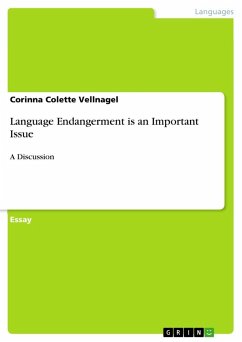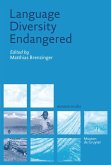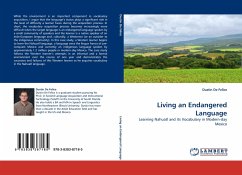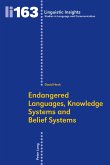Essay from the year 2011 in the subject Speech Science / Linguistics, grade: Excellent, The University of Surrey, language: English, abstract: 'Tarn palkö enim ab uo tundö' - Only a handful of people are still able to understand these Livonian words (Viitso: 1990). Reasons why languages such as Livonian are becoming extinct are manifold and the estimated 7000 languages which "are being spoken around the world" (Colls: 2009, p. 1) are expected to rapidly shrink in the upcoming decades. It is obvious that language extinction and language death have reached an exceptional level in recent years and that the forecast for a striking percentage of the world's dying languages is very high (Hale et al.: 1992). An untold number of languages has already died and the "disappearance of languages continues" (Wurm: 1991, p. 1) constantly. One reason for this loss is the fact that "more and more people switch to one of the dominant languages, especially English, and" (Deterding: 2004, p. 27) in consequence miss out on transmitting their endangered indigenous language to their descendents (Crystal: 2000). The problem of language death has only been discovered in the late 1980's and it is assumed that within this century 50% of the currently spoken languages will become extinct and that another 40% will be endangered so that their extinction is no longer ne avoidable - but only if this trend continues (Krauss: 1992). Although, this estimation might sound very pessimistic it is obvious that a drastic reduction of language diversity is on its way. In these premises, thoughts about how to countervail the reduction of diversity have come up within the last couple of years (Hale et al.: 1992; Bobaljik et al.; 1996; Grenoble and Whaley: 1998) with one possibility being to respond to the dying of languages by extensively documenting endangered languages before they actually become extinct. Considering the extent and the speed in which








